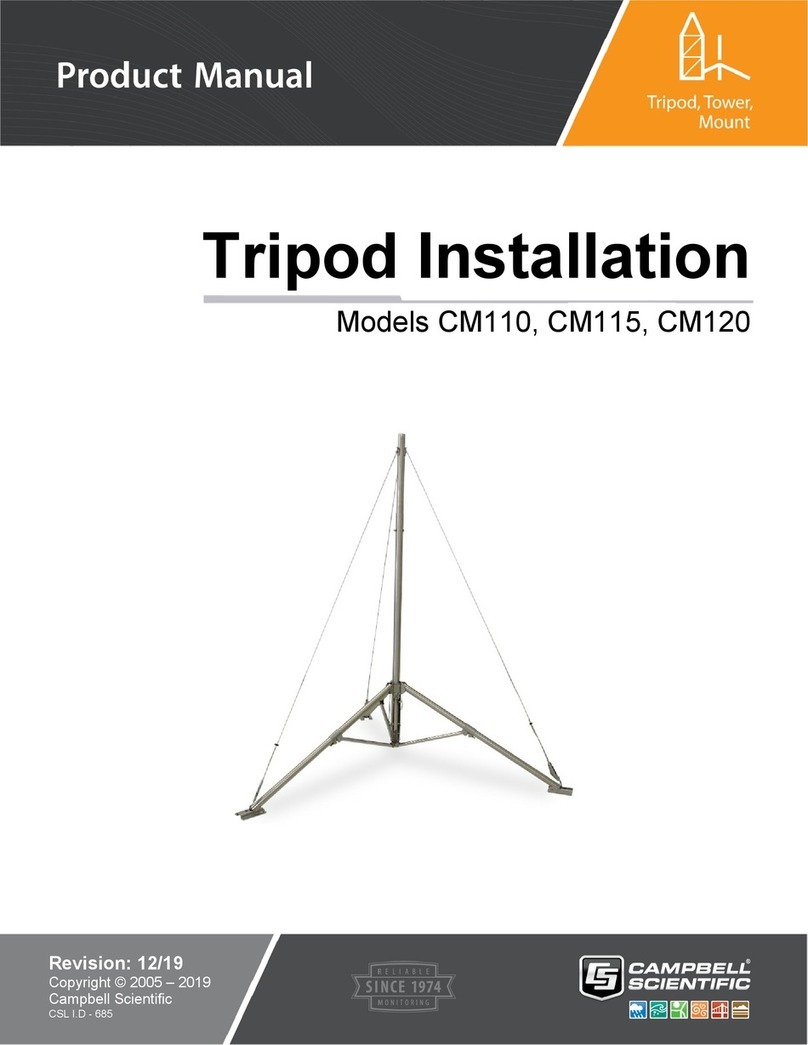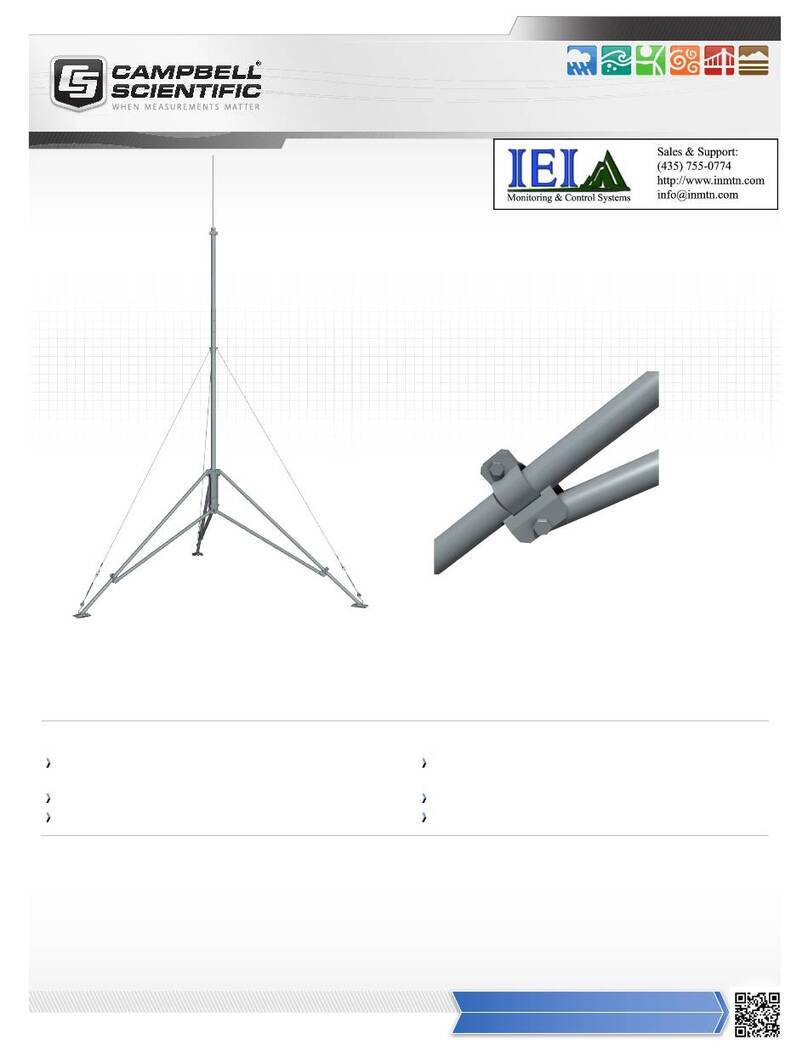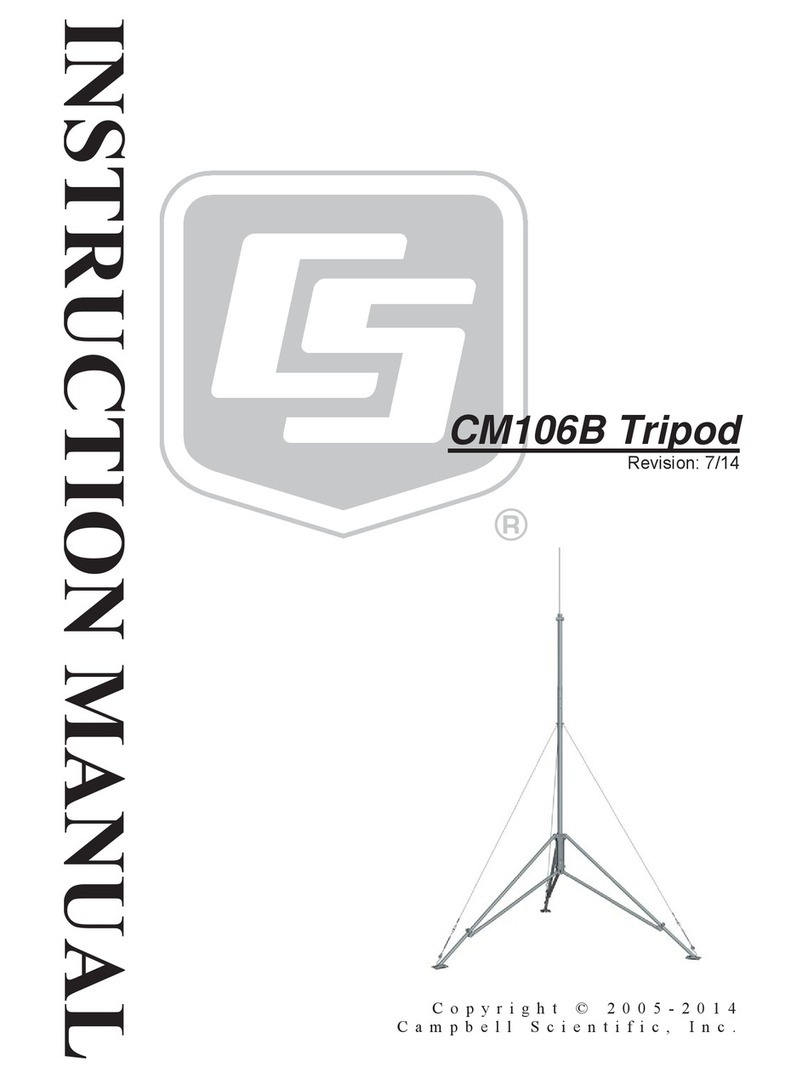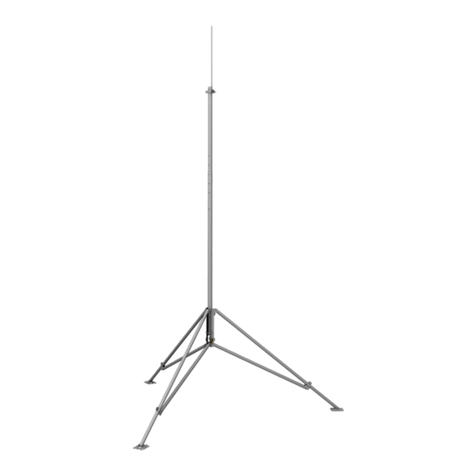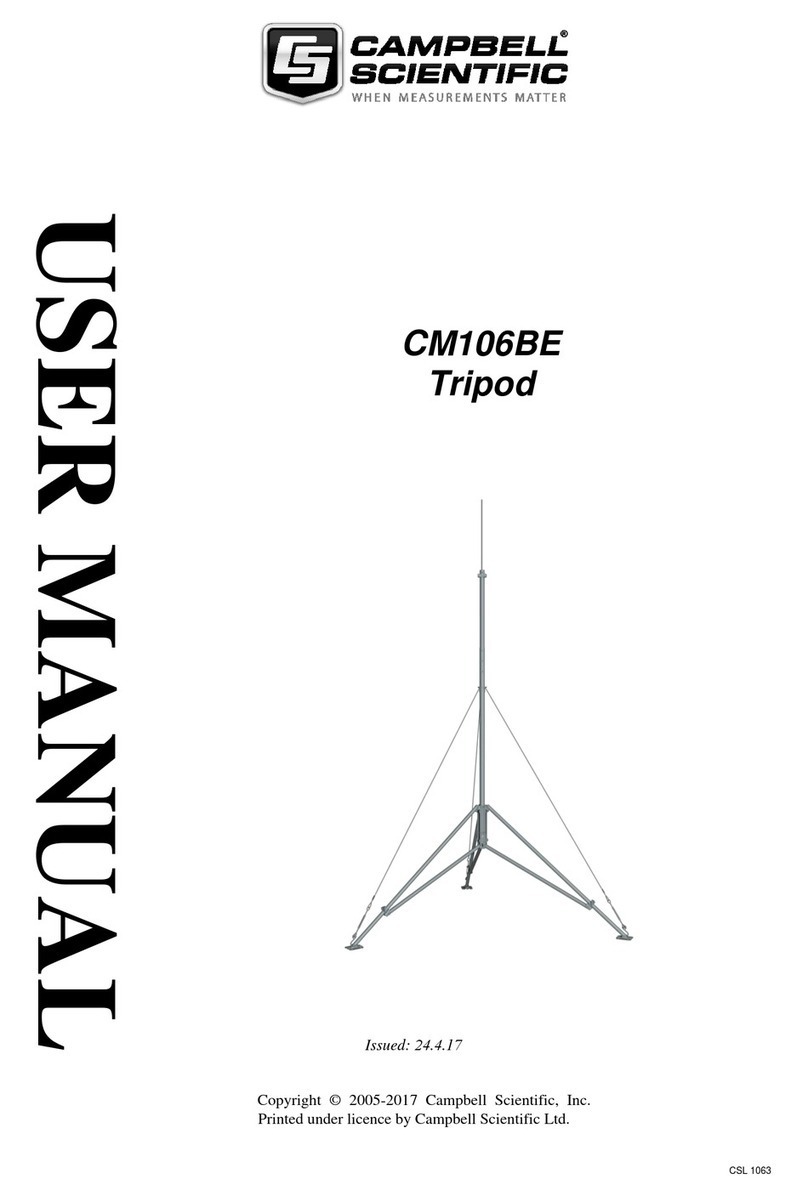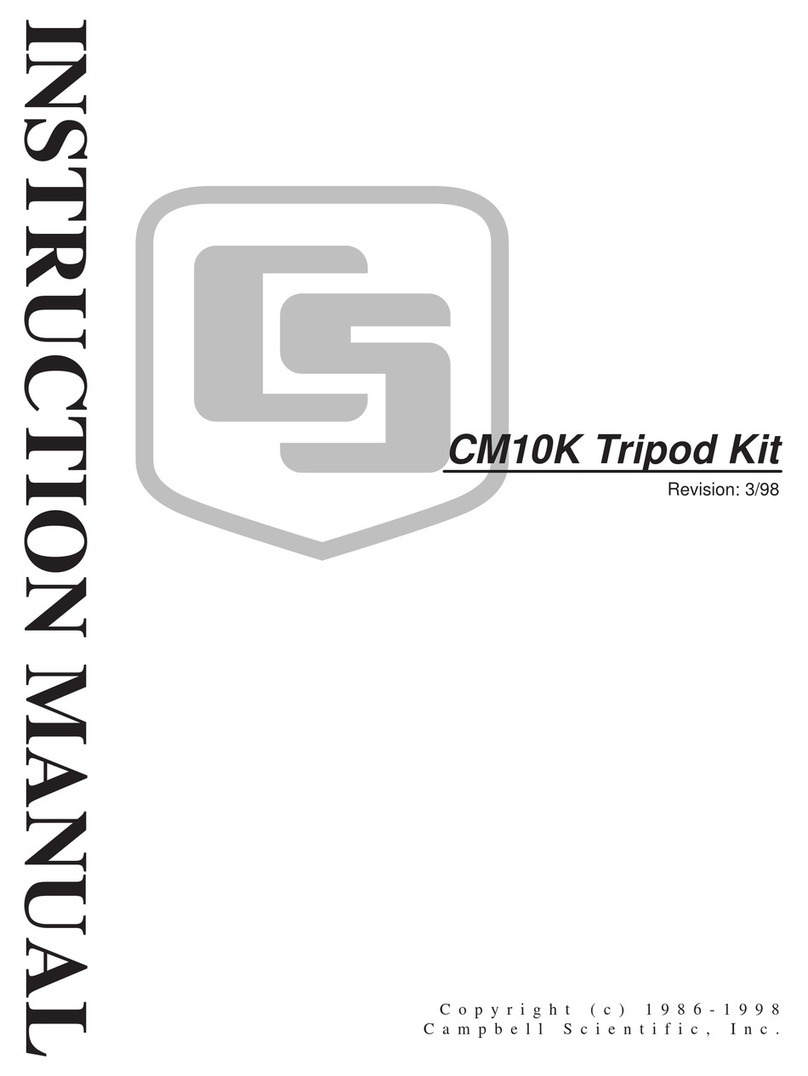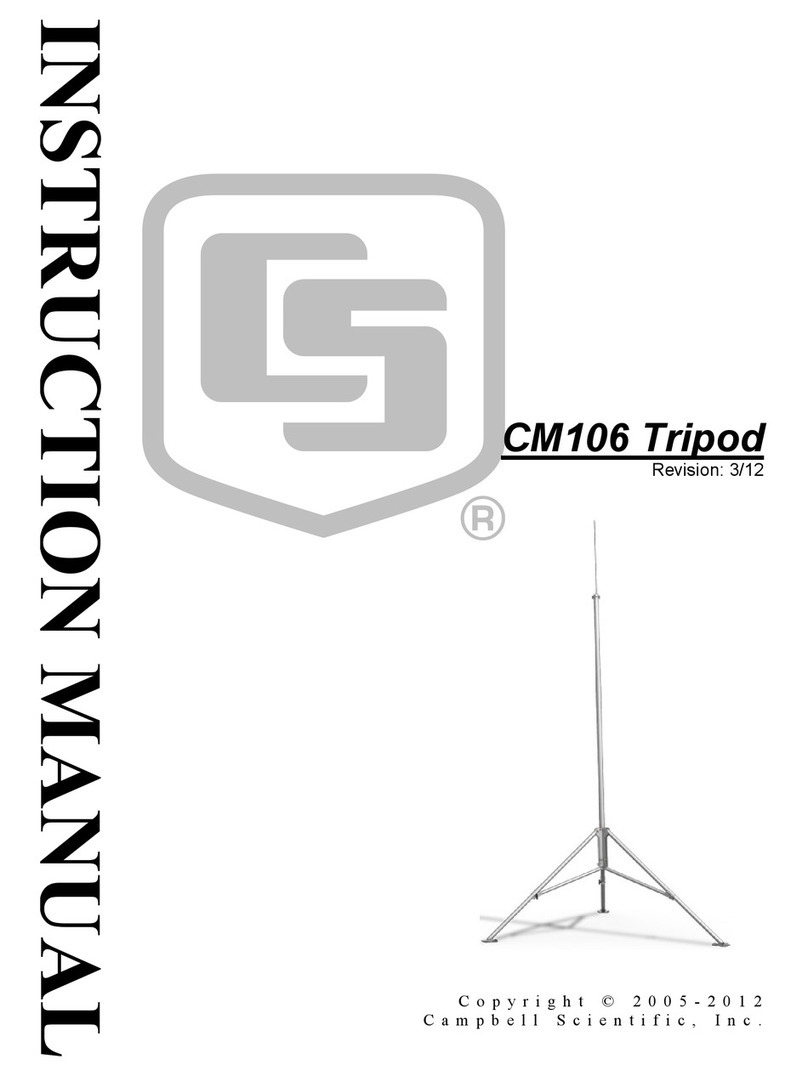
Tripod Installation Table of Contents
PDF viewers: These page numbers refer to the printed version of this document. Use the
PDF reader bookmarks tab for links to specific sections.
1. General .........................................................................1
2. Specifications ..............................................................2
3. Tools List (for tripod, mast and crossarm) ...............3
4. Tripod Components.....................................................3
5. Tripod Installation........................................................4
5.1 Tripod Base...............................................................................................4
5.2 Mast ..........................................................................................................5
5.3 Installing the Guy Kit ...............................................................................9
5.3.1 Guy Duckbill Anchor Kits ............................................................11
5.3.2 Lowering Mast after Attaching Guy Wires...................................13
5.4 Staking the Tripod Feet ..........................................................................14
5.5 Tripod Grounding ...................................................................................15
5.6 Crossarm Attachment .............................................................................17
5.7 Enclosure Attachment.............................................................................17
5.7.1 Enclosure Mounting to Tripod Mast.............................................17
5.7.2 Enclosure Mounting to Tripod Leg...............................................18
6. Mounting Brackets ....................................................20
6.1 CM210 Crossarm Mounting Kit.............................................................20
6.2 CM216 Mast Mounting Kit ....................................................................21
6.3 CM220 Right Angle Mounting Kit.........................................................22
6.4 CM225 Pyranometer Mounting Stand....................................................23
6.5 CM230 Adjustable Angle Mounting Kit ................................................24
6.6 CM235 Magnetic Mounting Stand .........................................................25
6.7 RM Young Gill Radiation Shields..........................................................26
Appendix
A. Tripod Tote Bag....................................................... A-1
Figures
1-1. Typical tripod-based weather station.......................................................1
2-1. 60-degree guy angle ................................................................................3
4-1. Tripod components..................................................................................4
5-1. Tripod leg, slide collar components ........................................................5
i
